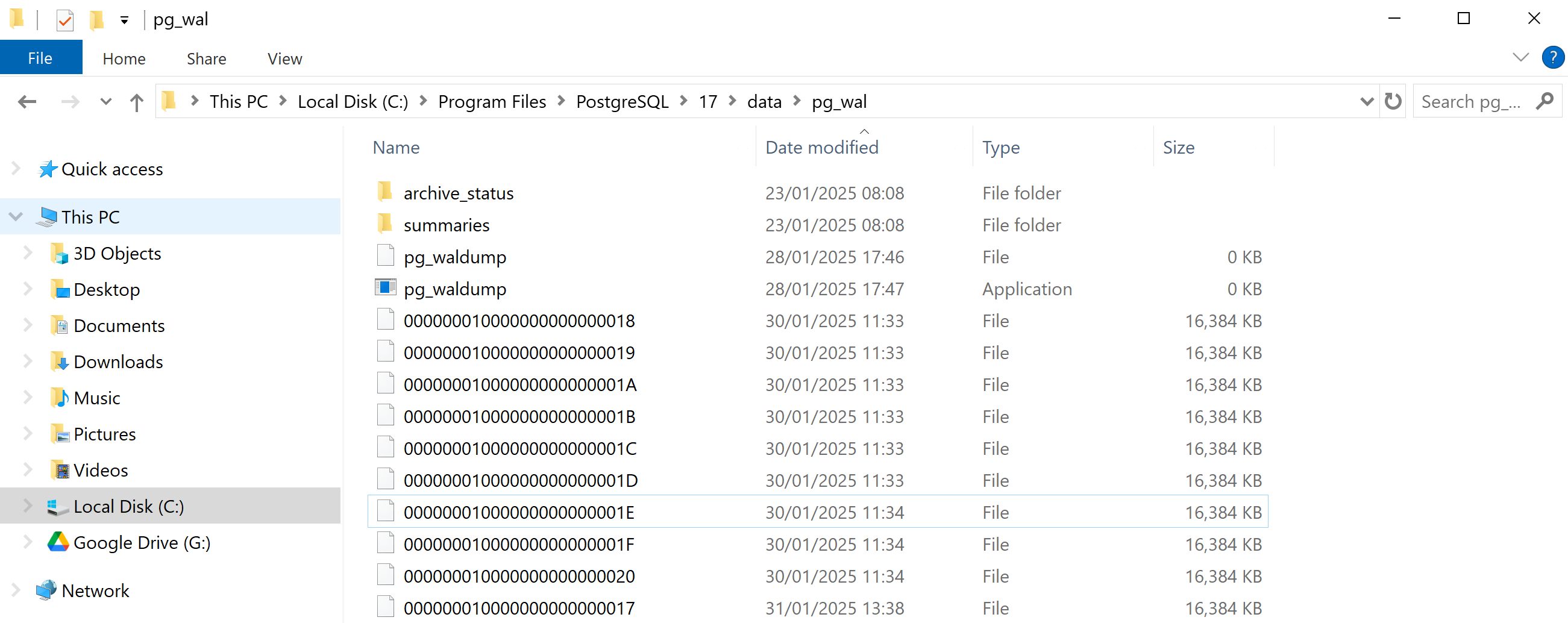Ensuring Data Integrity with Write-Ahead Logging

Write-ahead logging (WAL) is a technique used to maintain data integrity and reliability. Any change made to the database is first recorded in a log file before being written to the actual database on disk. This log file is stored on disk. By logging changes prior to modifying the database, WAL ensures that in the event of a crash or failure (such as power loss, OS crashes, or hardware failure), no data is lost and the database can be restored to a consistent state by replaying the log.
Key advantages of WAL include:
- Crash and point-in-time recovery, which ensures no data is lost.
- Because WAL entries are appended to the end of the log, disk writes are faster (sequential writes). This method also reduces the risk of data corruption, as existing data remains intact while new entries are added.

It's important to emphasize the role of fsync. Most operating systems provide an fsync system call to ensure data is written from memory to disk. In this context, fsync guarantees that WAL entries are directly flushed to disk, bypassing caches such as the OS-level cache. Without fsync, the data could remain in memory or cached in the OS, and if a crash or failure occurs before it is written to disk, those changes could be lost.
PostgreSQL has an fsync parameter in the postgresql.conf file. When enabled, it ensures that WAL entries are safely written to disk before confirming a transaction is complete. If this setting is turned off (which is not recommended), PostgreSQL may skip this step to boost performance, but doing so increases the risk of data loss if the system crashes.
One final point to mention: In PostgreSQL, WAL files are stored in the data directory, typically inside a folder called pg_wal.
